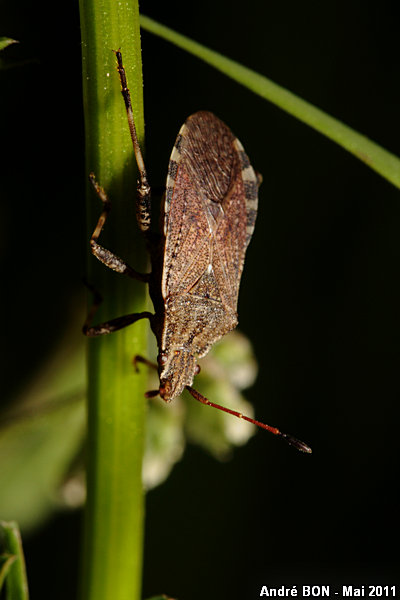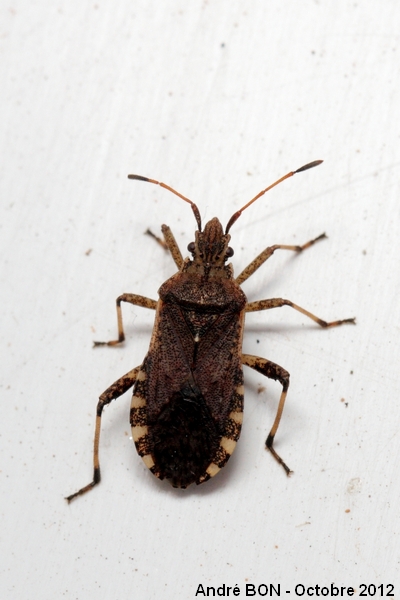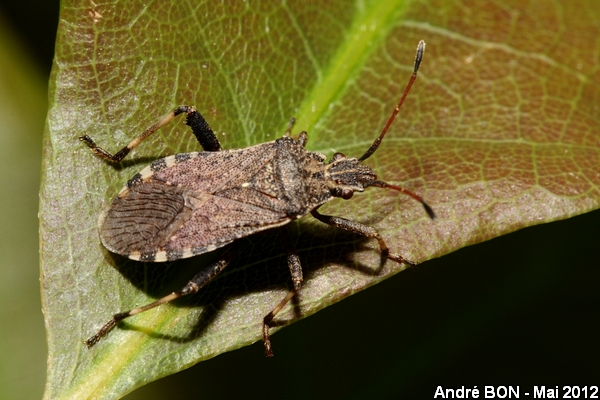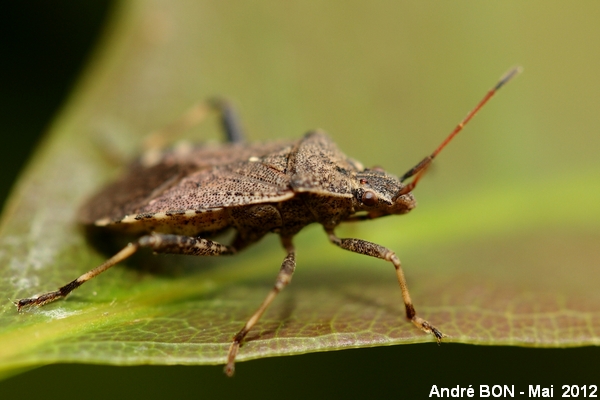



| Ceraleptus gracilicornis (Herrich-Schaeffer, 1835) |




|
|
Scientific name: Ceraleptus gracilicornis (Herrich-Schaeffer, 1835) Common name: French name: Order: Heteroptera Family: Coreidae Wingspan : 10.5-12 mm. Biotope: Low growing vegetation, meadows with shrubs, fallow lands. Preference for hot and dry places. This species is missing in very damp areas. Geographic area: Europe, missing in the British Isles and in Scandinavia. North Africa. Middle-East. Observation period : |
Ceraleptus gracilicornis is a lengthy bug with a greyish brown ground colour. It shows a well marked white tip on the scutellum. The angles at the front of the pronotum, on each side of the head, are very sharp, forming some kind of small peaks pointing forwards. The hind femora bear two or three large spines (and some smaller ones) pointing backwards. The thin antennae, of four articles, are orange coloured except the last article which is black. The connexivum is black and white. Ceraleptus lividus and Ceraleptus obtusus do not show sharp angles at the front of the pronotum. Nemocoris falleni also shows sharp angles at the front of the pronotum. It only bears one spine on the hind femora. I have always observed very dark and thick antennae on the various galleries displaying pictures of this insect (criteria to be confirmed). |
| [To know more about the Ceraleptus gracilicornis] [Next picture] [Top] |

|
One peak forming a sharp angle is visible at the front of the pronotum (not so easy to see on this reduced picture). If this sharp angle were not visible, I would have hesitated with Ceraleptus lividus as the third article of the antennae appears thinner at the base. This is one criteria for this species but the sharp angle at the front of the pronotum clearly indicates the Ceraleptus gracilicornis species. |
| [To know more about the Ceraleptus gracilicornis] [Next picture] [Previous picture] [Top] |

|
All the criteria for the species identification are clearly visible on this picture. |
| [To know more about the Ceraleptus gracilicornis] [Next picture] [Previous picture] [Top] |

|
I have observed this insect in a clearing. The angles at the front of the pronotum are better visible on upper view pictures like here. You can also see a few spines on the left hind femur. |
| [To know more about the Ceraleptus gracilicornis] [Previous picture] [Top] |

|
This view with a reduced depth of field and a precise focus on the eye gives a more living and aesthetic picture. However it is less interesting from a naturalist point of view as you can only observe a very limited number of details of the insect's morphology. |